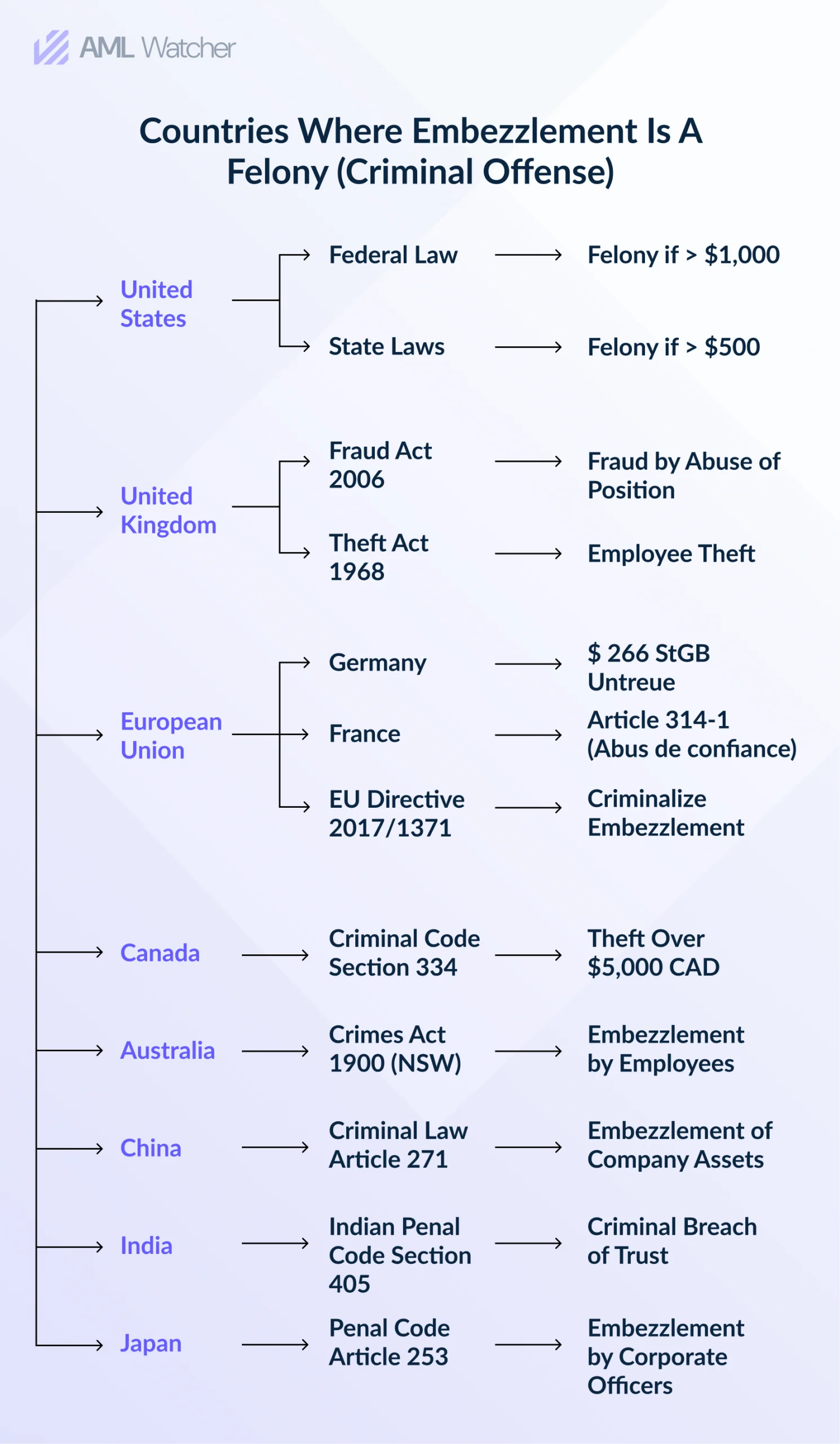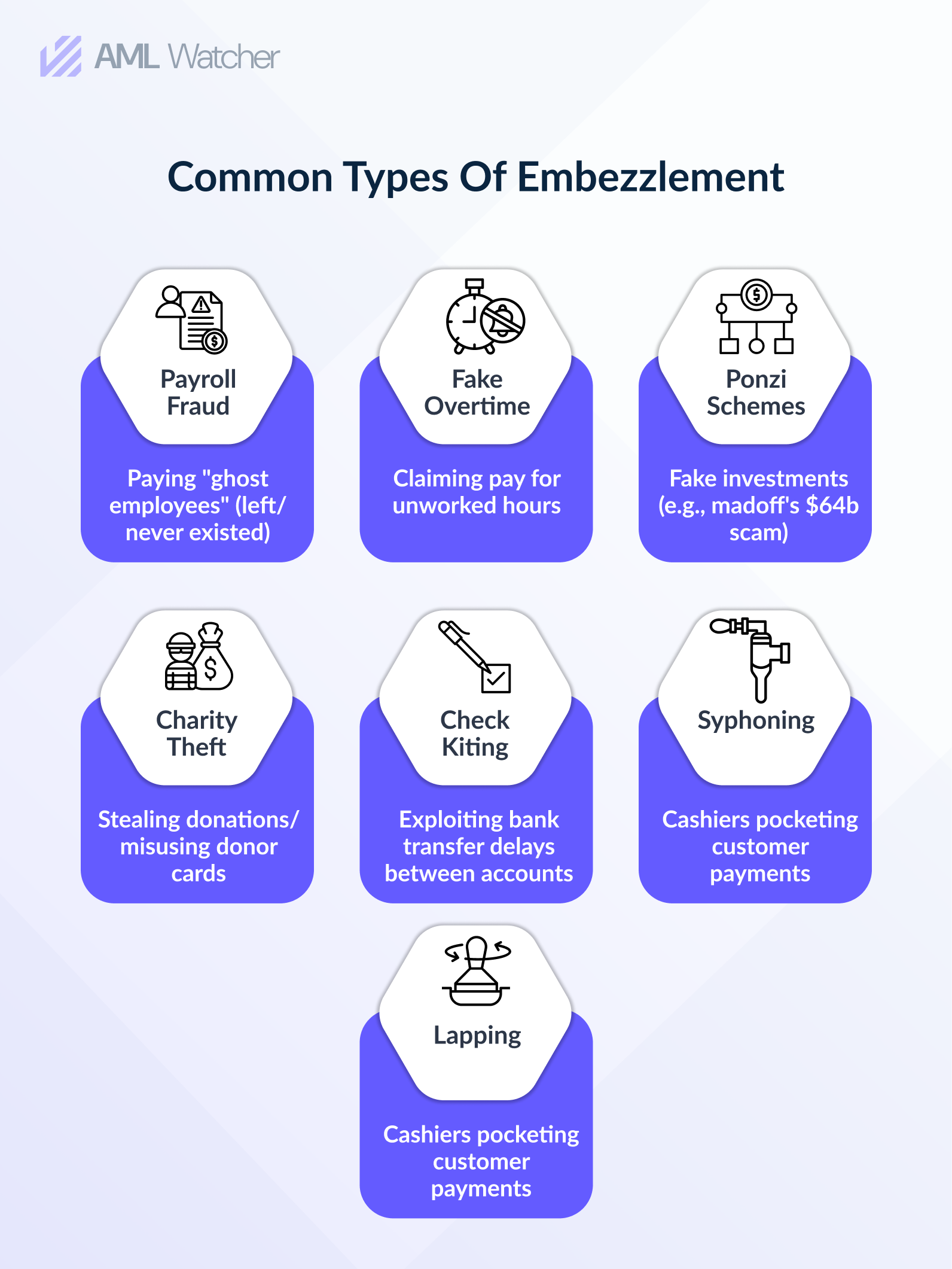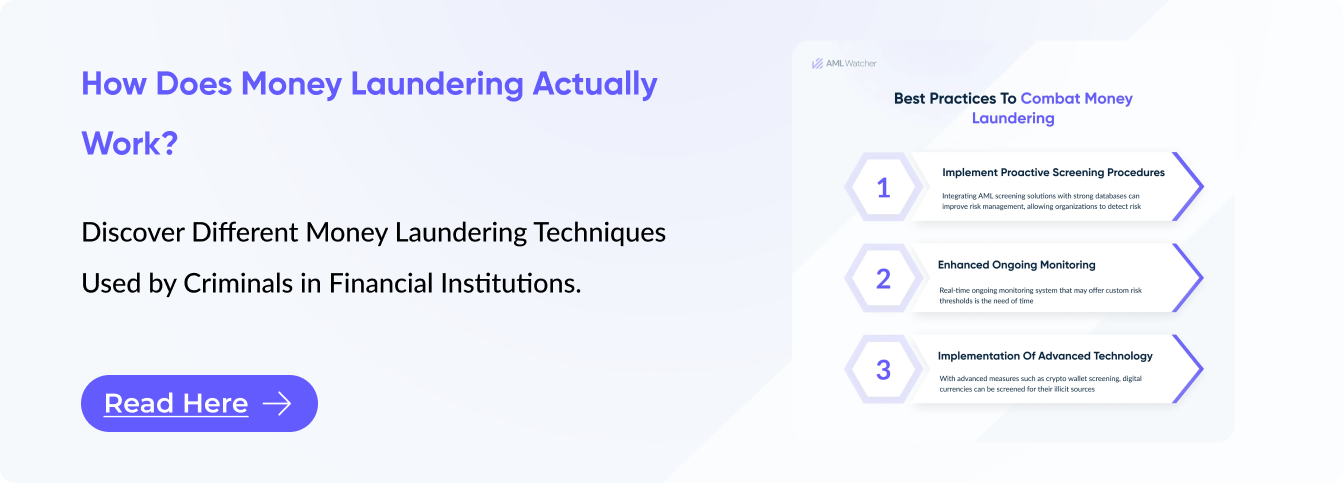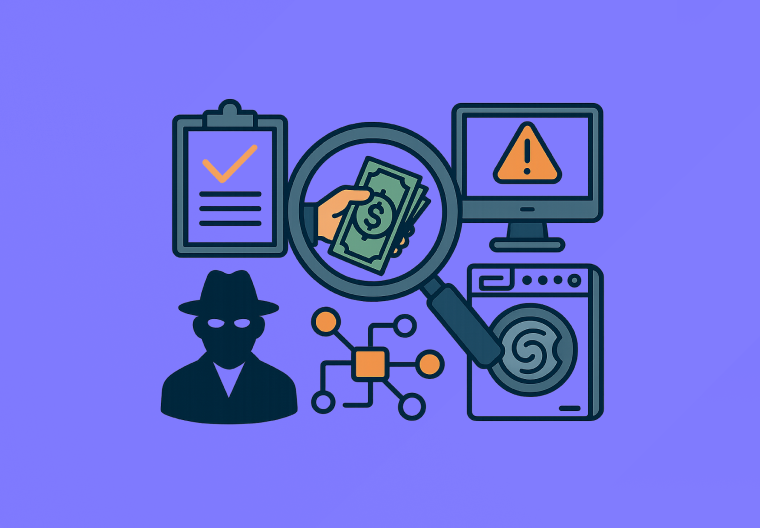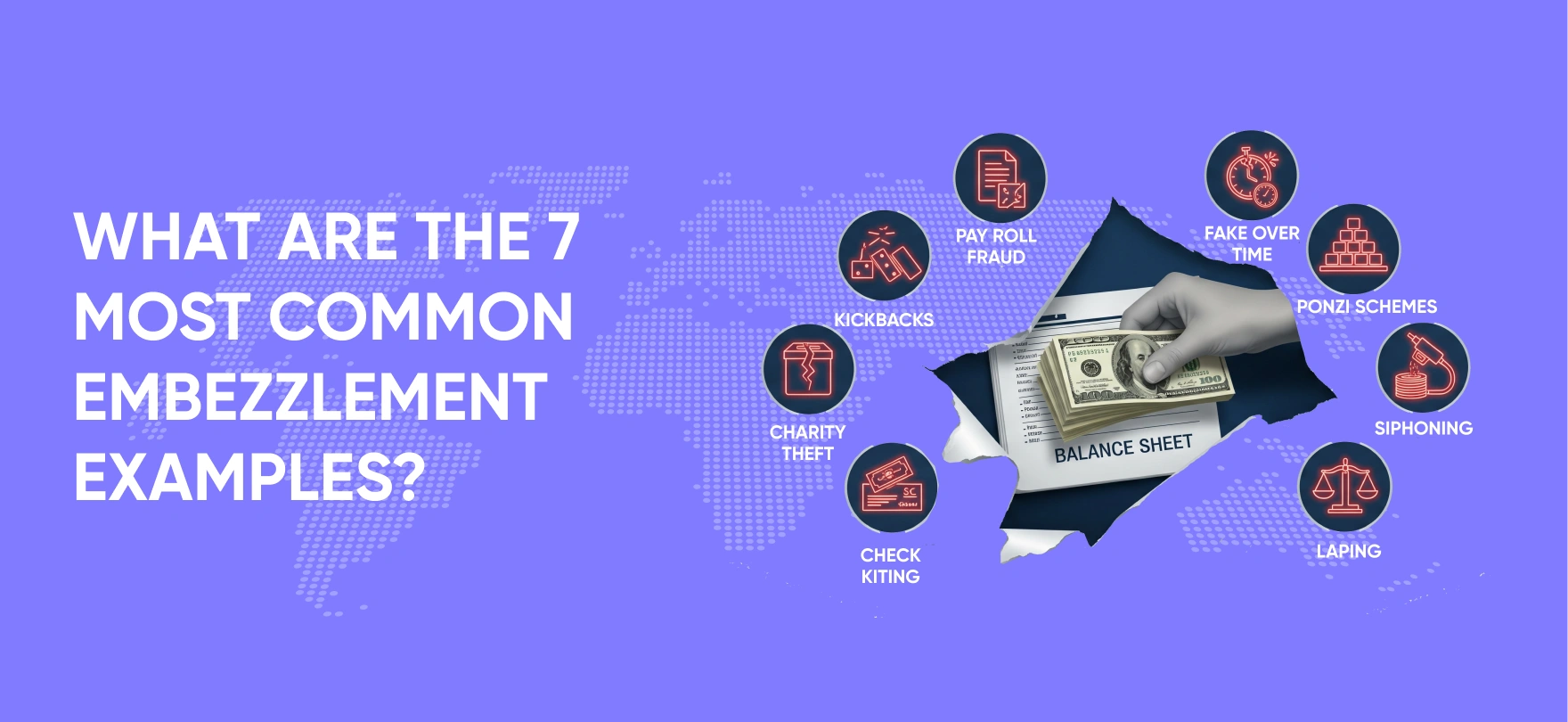
What Are the 7 Most Common Embezzlement Examples?
Do you know that embezzlement is one of the common financial institution fraud crimes, uncovered in FBI investigations?
Financial institutions process millions of transactions every single day and hence face a persistent threat of money laundering, which can include proceeds of crime like embezzlement as well.
They have no option but to be aware of the legal implications of embezzlement to protect their business.
According to ACFE’s ‘Occupational Fraud 2024: A Report to the Nations,’ embezzlement drives 89% of occupational fraud cases, with median losses of $120K per incident yet 50% of schemes exploit frail internal controls.
Under international law, embezzlement is a criminal act, and those found guilty of this crime can face serious punishments, including hefty fines and imprisonment.
It’s not just the financial loss, crimes like embezzlement can also wreck a company’s brand image and erode the trust of its clientele and stakeholders.
In this article, we will help you understand embezzlement meaning how compliance with AML laws can also help detect embezzlement. We’ll also explore whether embezzlement is a felony, a regulatory deep dive to combat embezzlement in the US & EU, and how financial firms can combat it.
What Is Embezzlement?
Embezzlement is a form of theft that usually involves the misappropriation of property by a person for personal use who was entrusted with it or has lawful access to it.
This crime entails the theft of funds or assets from an organization, and it is considered a serious criminal offense in various legal systems.
It often involves a trusted individual taking advantage of their position to steal government funds or private company funds or assets, most commonly over a period of time. It is most often associated with the misappropriation of money.
Is Embezzlement a Felony (Serious Crime)?
Embezzlement is classified as a felony (a major crime with severe penalties) in most legal systems around the world because it involves the following three factors:
Breach of Trust
Unlike theft (where someone steals without permission), embezzlement involves legal access turned criminal. For example, a bank manager transfers customer deposits to a personal account. They were allowed to handle money but stole it.
Why is it worse? Society punishes betrayal of trust more harshly than opportunistic theft.
Intentional Harm
It’s a premeditated act to permanently deprive the owner of their assets.
Prosecutors must prove the embezzler planned to keep the assets (not borrow them).
For example, a charity director secretly diverts donations to a shell company.
Legal test: Did they hide transactions? Fake records? Spend the money on personal luxuries?
Economic Damage
Embezzlement often targets public funds (hurting taxpayers, pensions/charities) and harms vulnerable groups and small businesses (causing bankruptcy).
Scale matters! Stealing $1,000+ is almost always a felony, smaller amounts may be misdemeanors.
The severity of embezzlement also (e.g., misdemeanor vs. felony) depends on the amount stolen (higher sums = more severe charges), victim type (e.g., public funds or vulnerable groups often trigger harsher penalties) and jurisdictional laws.
Penalties for embezzlement are often harsher for government embezzlement (e.g., 20+ years in Vietnam).
Types Of Embezzlement
Payroll Fraud
A deliberate manipulation of payroll systems where perpetrators create fictitious employees or falsify work hours to generate unauthorized payments.
This often occurs when individuals with payroll access exploit internal control weaknesses, such as a lack of segregation between payroll approval and verification functions.
Organizations with decentralized operations are particularly vulnerable to such schemes.
Fake Overtime
A specific payroll fraud variant involves the falsification of overtime hours worked.
Perpetrators typically exploit supervisory approval processes, either through collusion with approving managers or by taking advantage of inadequate timekeeping verification systems.
Such schemes frequently target organizations with complex shift patterns or remote work arrangements.
Ponzi Schemes
A fraudulent investment operation where investment funds are paid to existing investors from funds contributed by new investors instead of legitimate profits.
These frauds count on a constant inflow of new capital to maintain the illusion of profitability, inevitably collapsing when recruitment of new participants slows.
They embody both securities fraud and a form of embezzlement from later investors.
Charity Theft
The misappropriation of funds or assets donated to nonprofit organizations.
This usually happens when individuals with fiduciary responsibility divert charitable contributions for personal use, often through fabricated expenses, inflated service contracts, or direct fund diversion.
Such acts constitute a particularly egregious violation of public trust.
Check Kiting
A form of bank fraud involving the intentional writing of checks from accounts with insufficient funds, relying on the float period between check writing and clearing.
Perpetrators exploit the time delay in interbank settlement processes to create artificial balances throughout manifold accounts.
This constitutes both embezzlement and wire fraud under federal statutes.
Siphoning
The systematic diversion of funds through cunning manipulation of financial systems.
Modern variants often involve electronic payment platforms where small, irregular amounts are diverted to evade getting caught.
Such schemes frequently target high-volume transaction environments where minor differences may escape notice during routine reconciliations.
Lapping
A complex accounts receivable fraud where incoming payments are misappropriated and subsequent payments are applied to cover prior shortages.
This requires the perpetrator to keep precise but fraudulent accounting records to conceal the ongoing theft.
The scheme typically unravels when customer payment inquiries reveal improper payment requests or when the perpetrator can no longer maintain the cover-up cycle.
How Can AML Watcher Help You Detect Clients Involved in Embezzlement?
Embezzlement is an internal fraud that often evolves into money laundering when stolen assets are moved, hidden, or integrated. AML Watcher supports financial institutions by flagging behaviors, connections, and risks that are symptoms of embezzlement.
1. Watchlist and Sanctions Screening
AML Watcher screens against 3500+ global watchlists and real-time sanction data, including secondary sanctions. It helps financial institutions to flag clients that may be involved in embezzlement and money laundering.
If a financial institution is onboarding a corporate client. AML Watcher’s real-time sanctions and global watchlist screening detects that the executive director of this entity was recently added to a U.S. Treasury watchlist for embezzling public funds.
Customers will have swift detection of designated individuals before account activation or fund transfers.
2. Adverse Media Screening with Sentiment Analysis
AML Watcher detects multilingual negative news related to clients, with detailed sentiment analysis. It helps reveal early signs of embezzlement by flagging news reports, whistleblower articles, and financial journalism that mention a client in the context of fraud or fund misuse.
For instance, if a bank client appears in a foreign-language news report accused of siphoning funds from a charity. AML Watcher flags this through adverse media screening. With sentiment analysis distinguishing negative financial context, compliance teams receive a relevant and timely alert.
Customers will be able to get early insight into negative media signals, especially in non-English contexts.
3. PEP and RCA Screening
AML Watcher particularly screens for Level 4 Politically Exposed Persons (PEPs), their Relatives and Close Associates (RCAs), and Aliases (AKAs). Since embezzlement often involves PEPs using their power to divert funds, this screening reveals hidden ties that may suggest elevated risk.
In this way, AML Watcher helps expose indirect links to politically exposed individuals who have embezzled funds.
For instance, a new high-net-worth client applies for premium banking services. Whilst they are not politically exposed themselves, AML Watcher identifies them as a close associate of a former finance minister who faces embezzlement charges. This triggers enhanced due diligence, and it may reveal suspicious financial patterns.
For a customer, deeper relationship mapping helps expose riskier ties that are not clear at surface level.
4. International Leaks Database
AML Watcher provides access to gazillions of documents from legal records and leaks, such as the Panama Papers. It is useful in exposing obscure entities or offshore accounts where embezzled funds might be placed.
During onboarding, AML Watcher matches the client’s shell company in the Caribbean to leaked documents in the Panama Papers.
These papers list the client’s entity as a recipient of diverted government grants under investigation in another jurisdiction.
The FI will have access to international leaks that help them to be aware of covert corporate structures used in embezzlement.
5. Transaction Monitoring1
AML Watcher uses augmented intelligence with over 50,000 predefined rules, capable of handling 1000+ transactions per second. It automatically identifies shady patterns, like round-dollar transfers, rapid movements to multiple accounts, or transfers inconsistent with a client’s profile, which are the typical hallmarks of embezzlement.
For instance, AML Watcher will flag unusual internal transfers by a mid-level employee as high-risk due to their velocity and structure, which may indicate possible misappropriation.
FI will then launch an internal compliance audit after AML Watcher’s transaction monitoring flags a sequence of small, structured transfers initiated by a payroll officer, which may amount to hundreds of thousands over 12 months.
The behavior matches embezzlement typologies, which may lead to an investigation that recovers stolen funds.
6. Fraud Detection Engine
AML Watcher delivers 99% accuracy with <1% false positives. This is ideal for pinpointing fraudulent transactions that may signal embezzled funds. It identifies transaction anomalies in real-time, which makes it easier to investigate potential embezzlement before funds disappear.
For instance, a series of transactions is sent to a newly registered vendor. AML Watcher’s fraud engine, which processes over 1,000 transactions per second, detects unusual billing progressions and designates the vendor as an entity controlled by the client’s procurement officer. The case is escalated and stopped in time.
FIs will be able to minimize financial leakage with AML Watcher’s rapid, intelligent fraud detection.
7. Custom Risk Scoring and Ongoing Monitoring
AML Watcher helps institutions assign dynamic risk scores to clients based on behavior, sector, or associations. It provides real-time alerts if a low-risk client’s risk level increases due to new adverse media, shady transactions, or updated watchlist status.
A low-risk client gradually accumulates red flags including frequent offshore transfers, foreign news mentions and transactions inconsistent with their profile. AML Watcher’s configurable risk scoring engine recalibrates such a client’s risk level in real-time and will prompt a full compliance review.
Customers will get automated risk escalation which confirms that no suspicious behavior goes unnoticed in the course of time.
8. Integrated Case Management
AML Watcher’s integrated case management system helps compliance teams document, track, and escalate suspicious cases, which supports a streamlined investigation process for embezzlement-related risks.
AML Watcher’s case management tools help the compliance team to centralize all alerts, suspicious transactions, adverse media, and watchlist hits into one case file.
Investigation timelines, audit trails, and decisions are easily recorded and exported for regulatory reporting.
Customers will have end-to-end workflow support for efficient internal investigations and reporting.
We are here to consult you
Switch to AML Watcher today and reduce your current AML cost by 50% - no questions asked.
- Find right product and pricing for your business
- Get your current solution provider audit & minimise your changeover risk
- Gain expert insights with quick response time to your queries

